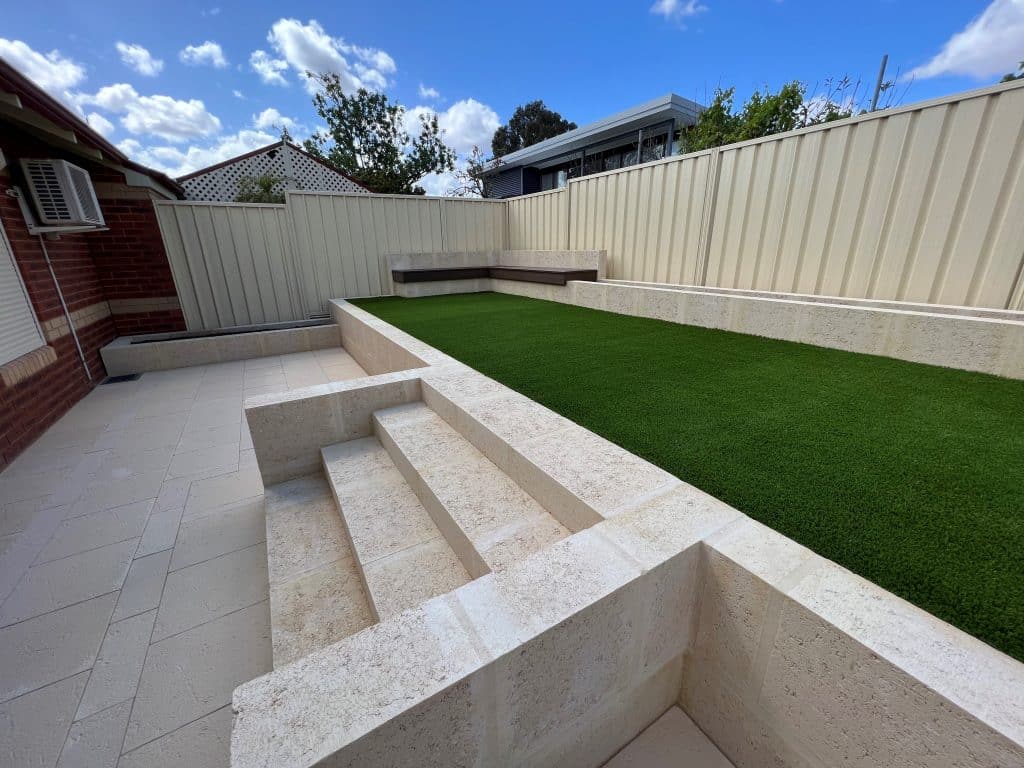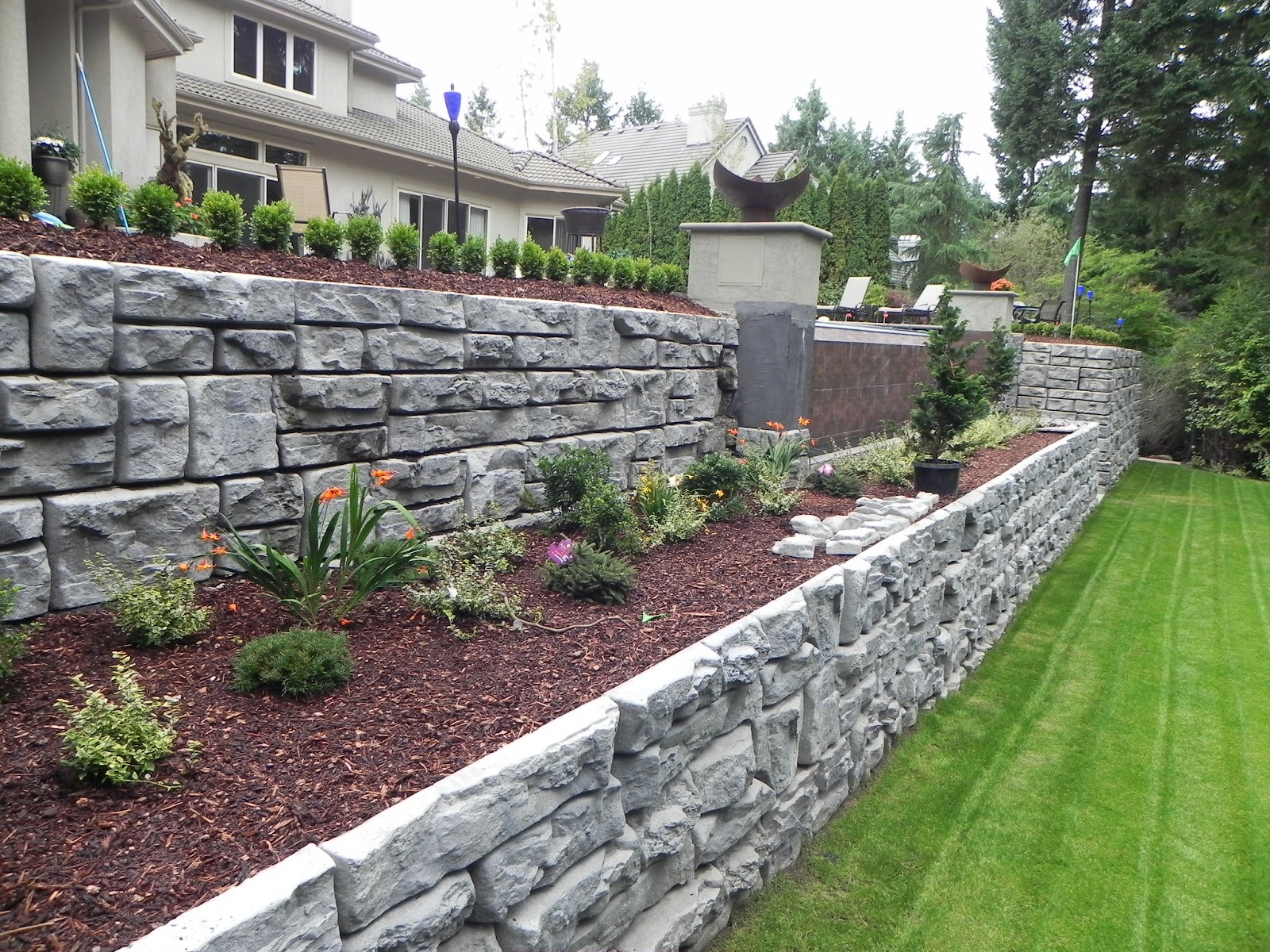Enhancing Residential Or Commercial Property Security: The Function of Retaining Walls in Dirt Retention and Erosion Control
In the realm of residential property management, maintaining stability and protecting against erosion are vital problems for home proprietors and programmers alike. Retaining walls stand as silent guardians, playing a critical duty in dirt retention and disintegration control. Their significance extends beyond plain structural support, influencing the overall integrity and longevity of a building. By checking out the subtleties of different types, style considerations, construction techniques, and maintenance pointers linked with keeping walls, a deeper understanding of their essential role in improving property stability arises. The complex dancing in between engineering prowess and environmental consistency introduces an engaging narrative that underscores the important nature of keeping walls in modern land monitoring.
Significance of Retaining Walls in Security
The importance of preserving walls in making certain stability within landscapes can not be overemphasized. Retaining wall surfaces play a vital role in holding back dirt, preventing disintegration, and developing level surfaces in sloped locations. By providing architectural support, maintaining wall surfaces help to redistribute side stress caused by soil, protecting against landslides and slippage. Along with enhancing the aesthetic charm of a residential property, retaining walls add to the total safety and security and functionality of outside areas.
Keeping walls are particularly vital in irregular or sloping surfaces where dirt disintegration is a typical incident. Without appropriate assistance, soil erosion can result in the degradation of landscapes, jeopardizing the stability of structures and positioning dangers to residents. Keeping walls act as obstacles, maintaining the dirt and avoiding it from moving downhill during heavy rainfall or various other ecological stressors.
Additionally, retaining wall surfaces supply long-lasting benefits by reducing maintenance prices related to dirt erosion and land instability. By buying properly designed maintaining walls, building proprietors can guarantee the longevity and sustainability of their landscapes while advertising a aesthetically attractive and secure atmosphere.

Kinds Of Retaining Walls for Disintegration Control
Frequently used in landscape design and civil design tasks, various kinds of retaining wall surfaces work as efficient remedies for erosion control in diverse terrain problems. Gravity keeping wall surfaces are strong structures that depend on their weight to resist the stress of the soil behind them. They are ideal for low to tool elevation applications and are usually made of concrete or stone. Cantilever retaining wall surfaces, on the various other hand, are developed with a thicker base and make use of a lever arm to hold up against the soil stress. These wall surfaces are typically made use of in areas where area is restricted.
For taller walls or where space is a constraint, anchored retaining walls are frequently employed. When selecting the suitable type of keeping wall for erosion control, factors such as dirt composition, wall surface elevation, and site conditions must be carefully considered to ensure long-lasting security and performance.
Style Considerations for Soil Retention
The elevation and area of the maintaining wall surface are important elements that affect the overall style. Designers should additionally consider the stress exerted by the maintained dirt and potential side loads to make sure the structure's stability over time.
Moreover, the product choice for the preserving wall is important in boosting longevity and performance. Concrete, lumber, gabion baskets, and all-natural stone click site prevail products utilized in keeping wall building and construction, each with its one-of-a-kind benefits and considerations. Appropriate drain devices, such as weep holes and French drains, need to be integrated right into the layout to avoid water build-up behind the wall surface, which can lead to structural failing and erosion.
Building And Construction Methods for Keeping Walls
When implementing layout considerations for effective soil retention, the construction methods for keeping wall surfaces play an essential function in guaranteeing structural stability and long-lasting stability. The success of a keeping wall mostly depends on the construction methods utilized. One typical method is the gravity wall, which counts on the weight and mass of the wall itself to stand up to the stress of the preserved dirt. Gravity wall surfaces are appropriate for low to medium elevations and are reasonably easy to construct. Retaining Walls Sunshine Coast.
Another extensively utilized construction strategy is the cantilevered wall, which makes use of a concrete piece foundation that expands backwards right into the maintained soil. This style provides added stability and is ideal for tool to high keeping wall surfaces. For taller structures, enhanced soil strategies such as the use of geogrids or dirt nails can be utilized to enhance the wall surface's strength and security.

Upkeep Tips for Home Security
To ensure long-lasting residential property security, regular maintenance practices are vital for protecting the honesty of stopping and maintaining wall surfaces erosion problems. Checking preserving wall surfaces regularly is important to determine any kind of indications of damages, such as fractures, bulging, or leaning. Any issues need to be addressed without delay to stop additional wear and tear. Cleansing the surface of the keeping wall surfaces can likewise assist maintain their structural integrity by eliminating dirt, particles, and look these up plant life that could deteriorate the wall over time (Retaining Walls Sunshine Coast).
In addition to aesthetic evaluations and cleaning, it is essential to inspect the water drainage systems connected with the maintaining wall surfaces. Making certain that drains are clear of obstructions and functioning correctly can protect against water buildup behind the wall surfaces, which can result in stress and possible failing. Correctly functioning drain systems are important for managing water circulation and reducing the danger of erosion.
Routinely keeping track of and maintaining maintaining walls according to these pointers can expand their lifespan and add to the overall stability of the residential or commercial property.
Conclusion
To conclude, keeping wall surfaces play an important duty in enhancing home security by preventing soil disintegration and preserving soil in position. By using various sorts of preserving walls and considering layout and construction techniques, homeowner can properly control erosion and maintain the integrity of their land. Regular maintenance of preserving wall surfaces is vital to guarantee long-lasting stability and security against erosion. Appropriately built and preserved maintaining wall surfaces are crucial aspects in protecting residential property security.
For taller wall surfaces or where room is a restriction, anchored retaining walls are usually utilized. These walls use wires or strips that are secured into the soil or rock behind the wall to give extra support. When picking the proper type of retaining wall surface for erosion control, variables such as soil make-up, wall surface height, and website conditions should be thoroughly taken into consideration to make sure lasting security and efficiency.
One common method is the gravity wall, which depends on the weight and mass of the wall surface itself to withstand the pressure of the maintained soil. Cleansing the surface of the keeping walls can likewise aid preserve their architectural integrity by getting rid of dirt, particles, and greenery that can weaken the wall surface over time.